Types of Fishing Line: A Beginners Guide
- By Andy Grenfell
- |
- 27 February 2025

Choosing the right fishing line is just as important as selecting the right bait when it comes to fishing. Whether you're focusing on carp, coarse, predator, or sea fishing, the line you choose to use can make a big difference in your success on the water. This guide will break down the different types of fishing line and their applications in each discipline and help you understand when and how to use them.
Table of Contents
- TYPES OF FISHING LINE
- CARP FISHING LINE
- COARSE FISHING LINE
- PREDATOR FISHING LINE
- SEA FISHING LINE
- FINAL THOUGHTS
Types of Fishing Line
There are 3 main types of line which are monofilament, fluorocarbon, and braid. Each of these types of fishing line holds its own unique properties. Whilst there is no one-size-fits-all solution, many have applications in each area, which may outweigh their shortcomings, so we shall look at each one's key properties.
- Monofilament Line: A highly versatile line that comes in a range of breaking strains, and can be used in all fishing disciplines. Its main benefit is that it's very supple, meaning it casts very well, as well as being abrasive resistant. In more recent years, with advancing technology, we are seeing lines that are pre-stretched, resulting in the line being thinner, and helping to remove the stretch from the line, to improve bite indication. The main drawback to monofilament line is its stretch as it can compromise indication and any transmission through the line. For this instance, mono is a great all-rounder, due to its great casting properties, its abrasion resistance, and its low price point.
- Fluorocarbon Line: Virtually invisible underwater due to a low refractive index and being highly abrasion-resistant. In addition, it sinks extremely well due to not taking on water, and its low stretch properties, but its main drawback is it can be quite wiry, and ultimately, it’s poor casting abilities. For anything over 100 yards, you would not really be looking at a fluorocarbon line and would look more towards a monofilament or braided line. However, where it comes into its own, is close to medium range, at which point fluoro line is a superb choice. Its ability to pin itself down lends itself to being able to fish slack lines, out of the fish’s line of sight, so they cannot bump into your lines, and makes you harder for the fish to detect. Coupled with its abrasive resistance, it's also great should you choose to fish it as a naked helicopter arrangement, or naked chod, and also makes a great material for constructing leaders or as a hook link material.
- Braided Line: Offers zero stretch, with a much thinner line diameter offering great sensitivity and depending on the braid, long-distance casting capabilities. Due to its lack of stretch, it has a multitude of uses, from lure fishing, fishing long ranges or even snag fishing when thicker braids are chosen, and from feature finding and spodding. It is important to choose the correct braid for the job, as not only do you have diameter and breaking strains to choose from, but neutral, floating and sinking properties too. In addition, you will also see braid widely used for hook links and leaders, either as a standard braid or as hook links, often coated to reduce tangles.
Carp Fishing Line
With carp fishing, you need a combination of strength, stealth, and reliability. Carp are large, powerful fish, and the line you choose must be capable of withstanding strong fights while ideally remaining discreet in the water.
Monofilament mainline is best if your fishing is quite varied, and for most beginners, a 12lb or 15lb mono which is around a 0.35mm or 0.40mm, will tick most of your boxes. A large number of brands will make lines in such breaking strains and diameters. However, I will look at the slightly more extreme ends of the scale, if fishing to heavy snags, or weed you may wish to go up to a slightly higher breaking strain, say 18lb - 20lb and around a 0.43 - 0.45mm diameter to offer more abrasion resistance. However, it is worth noting that the thicker the line, the more wiry it will become, and subsequently impact your casting range.
When distance fishing, casting distances over 100 yards - 120 yards, in my opinion, a purpose-made casting mono is best. Now some may opt for a braid, which whilst a thin braid is great, can make an average caster gain a few extra yards if you are not a great caster, however, braid generates more friction, so will reduce your distance as you push further. In addition, due to its low diameter, will be more prone to cut-offs, so a proper low stretch thin mono with a tapered leader or a tied-on thin braided leader, will fly through the rings much smoother, and offer better durability for the fight. In addition, mono offers good shock-absorbing properties even in low stretch specs to absorb the heavy lunges of large carp.
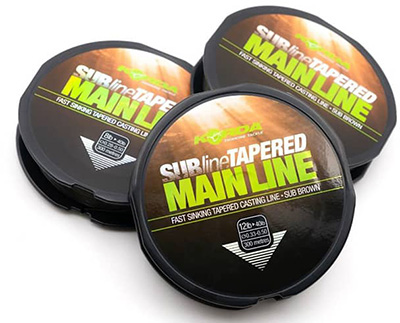
Braided mainline offers exceptional bite indication, and as such for large European waters, where you might be fishing more than 200 yards, braided line has to be the choice for that indication. Now where we would usually opt for lines with good sinking properties, at exceptional ranges, we want to keep the line off the deck as best possible for indication, so as such, a neutral braid is best with a fluorocarbon leader or say around 12ft - 15ft long, to keep it all pinned down and out of the fishes line of site. Back home, however, in a fishing situation, a sinking braid is far better, as braid is quite visual in the water when off the deck, and as such, a sinking braid will be harder to detect. Many anglers favour a monofilament or fluorocarbon leader to absorb the lunges during the fight at close range, and under the tip as well, to protect the fish's flanks.
Depending on the diameter, a thicker braid of 0.28mm - 0.35mm will offer great levels of abrasion resistance too and if fishing a weedy venue, will help combat the weed exceptionally well as it will cut through. It's worth noting when using braid, you should always use a length of tubing, or a fluorocarbon, leadcore leader due to the braids abrasive nature, and its ability to cut in, to protect the carps flanks in the fight. However, braids have a multitude of other uses, due to their lack of stretch, and these include feature finding and spodding.

Fluorocarbon mainline is an absolute favourite of mine, and if I only ever fished sub 80 yards, I would never use anything else. It's virtually invisible underwater, making it perfect for wary carp in clear waters. It's also heavy and sinks exceptionally well, keeping your setup hidden on the lake bed. Furthermore, it's tough as rope, abrasion resistant, low stretch, and if you look after it and keep it clean, will last a couple of years on your spools. Its drawback is its poor casting and wiry nature, but if you can work around those, it’s a superb line.
Hooklinks are crucial for presenting your bait in a way that carp are less likely to detect and will perform mechanically in the correct way. They are available in a range of materials like monofilament, fluorocarbon, braid, or coated. Depending on the fishing situation, choose the material best suited to the rig presentation you are going for.
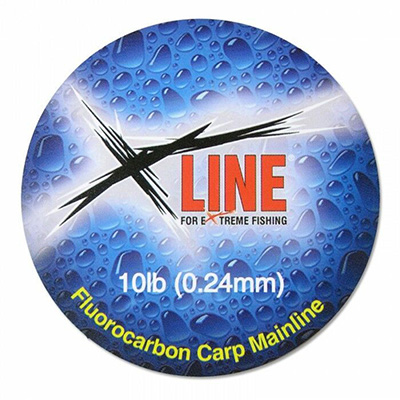
Shockleaders should always be used on marker and spod setups due to the low-diameter braids used. A 30lb or 40lb braided shock leader is more than enough to absorb the force of the cast to prevent crack offs, and still leave a small knot. However, a leader can be used in other situations, again long-range fishing, or heavy snag fishing where you need extra protection either with the above or a taper mono mainline. However, with braids, a mono or fluorocarbon leader will help to protect your disguise your end set up and protect the fish's flanks.
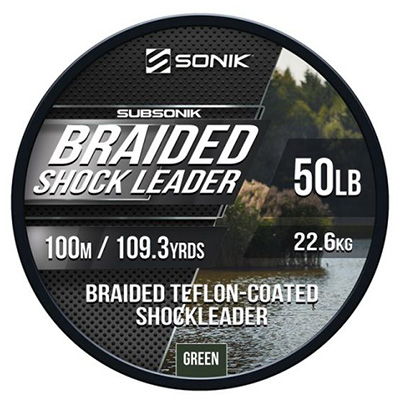
Spod & Marker line is often a braid of around 0.16mm - 0.18mm which is great for these uses with a shock leader. A 30lb - 40lb braided shock leader will be used to absorb the force of the cast, but due to the low diameter, it makes the task of casting larger heavier objects the required distance repeatedly. Purpose-made braids are available for such uses, with most spod braids being of a floating nature so the spod or spomb will retrieve easier, but for marker float work, you could use a spod braid or a purpose-made marker braid which will often sink so there is less risk of catching it when casting your rods towards the marker float.

Zig & Surface line is purpose-designed for fishing either on the surface or with zig line at various depths in the water column when carp are feeding off the bottom or on the surface. They are low diameter, low vis and buoyant to not take on water and sink and not compromise your presentation.
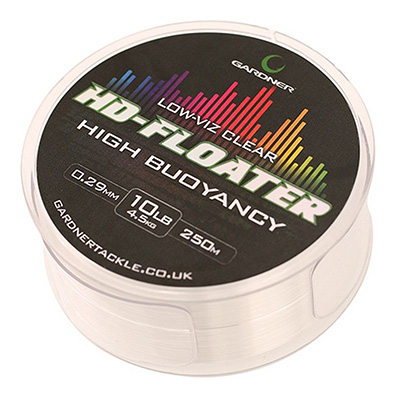
Coarse Fishing Line
With coarse fishing, you’re often targeting a variety of species, so versatility is key. Your line needs to be adaptable to different sizes of fish and a range of water conditions.
Monofillament line is very much the popular choice for everything from float fishing to poles, whips, and feeder fishing, both as mainline and hook link material. Due to the fish's delicate mouths, and the lightweight setups used, the monos stretch makes it far more user-friendly and affords more room when hooking larger than intended species for example.
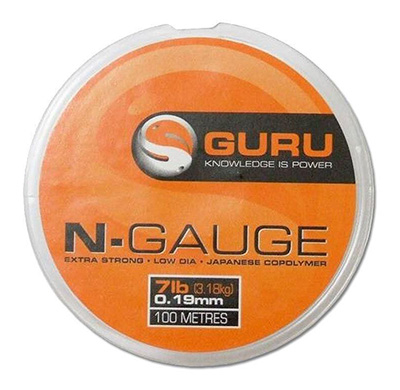
Braided line is often favoured when feeder fishing at long ranges, or specimen fishing for shy biting fishing such as big bream or tench, on some larger pits due to its zero stretch offering increased bite detection on light quiver tips. In addition, it's great for increased accuracy, as you get less stretch and less bounce on the cast when hitting the clip.
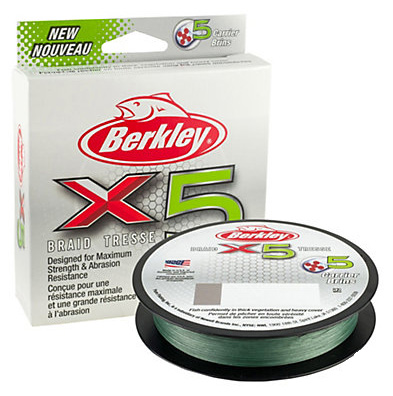
Predator Fishing Line
Predator fishing requires line with the strength to handle the fish, but also offers the most in the way of sensitivity for bite detection.
Braided line is often a preferred choice as perch and zander can be very shy biting, and also it helps offer increased bite detection to reduce the risk of deep hooking. Braid is certainly a preferred option when lure fishing to feel the knocks when the fish strikes the tail of the lure before a full strike, giving you time to potentially alter the retrieve or rework the line you cast again if needed, whilst the lack of stretch also helps the lure work in a better manner.
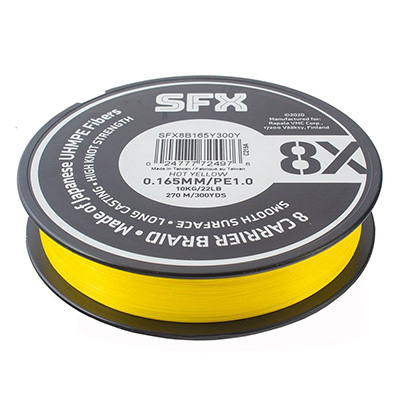
Monofilament line can be used for dead baiting or ledgering, especially if the water is clear, but for the reasons above, braid is better as not only will it help with bite detection, but also sets the trebles in a pikes boney jaws.
At the rig end, a wire trace should always be used, where pike or zander are present, to eliminate bite-offs, as their teeth will cut through braid and mono. If these are not present, a small fluorocarbon leader or hook link can of course be used.
Sea Fishing Line
With sea fishing, the line must be tough enough to handle harsh saltwater conditions and strong enough for big fish. Whether you're fishing from the shore or a boat, the right line is critical.
Braided line is often favoured for long-distance beach casting when fishing from the shore or lure fishing from rocks. Its high strength and low diameter allow you to cast further and feel even the smallest bites, despite the often rough sea conditions.
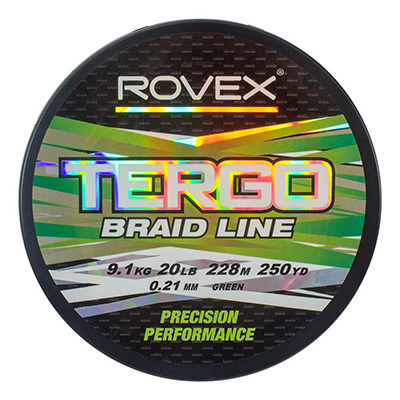
Monofilament line is a great all-rounder for sea fishing and can be used for almost all applications from beach casting if preferred, or boat work especially in high diameter. The stretch helps to handle strong runs from species like large conger, cod or big game where really powerful lines of 50lb - 80lb+ will be used. Durable and abrasion-resistant, it works well for all situations.
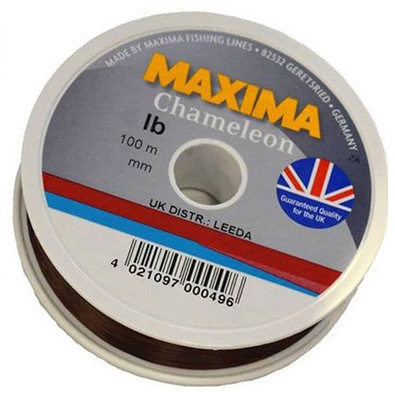
Final Thoughts
The right fishing line is essential for ensuring you not only fish effectively in situations and conditions you encounter, but also for ensuring your setup is strong, reliable, and suitable for the species you're targeting to give you the best chance of landing them. Whether you're after the stealth and strength of a fluorocarbon line for a clear intimate lake, braid for lure fishing, or a low stretch mono for carp at long range, or just a great all round of monofilament each type of line has its place.
Happy fishing and tight lines!












